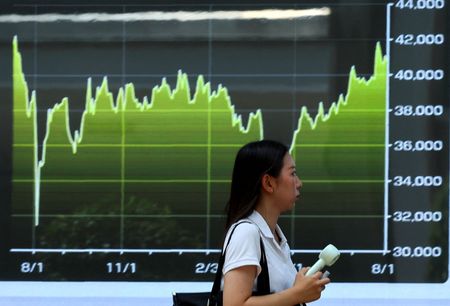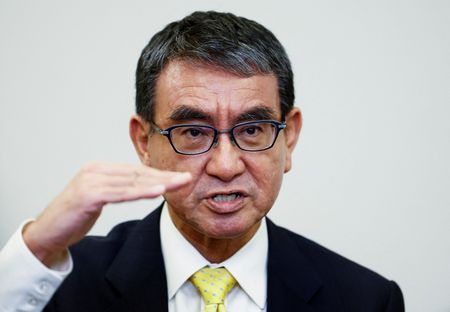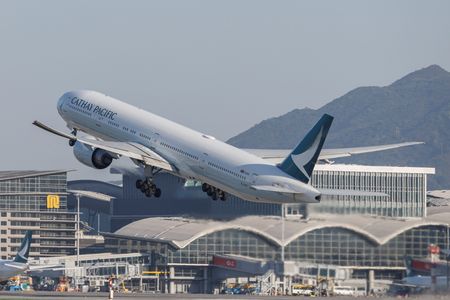By Stella Qiu
SYDNEY (Reuters) -Asian shares slipped along with Wall Street on Wednesday, after weak U.S. data highlighted the damage tariffs were having on economic activity and earnings, while the dollar struggled with the drag from lower bond yields.
U.S. services sector activity unexpectedly flatlined in July, data showed on Tuesday. Employment further weakened and input costs climbed by the most in nearly three years, underscoring the impact from President Donald Trump’s tariff policy.
Second-quarter earnings results also revealed pressure from Trump’s tariff wars. Taco Bell parent Yum Brands missed expectations as steep trade duties dent consumer spending, while Caterpillar warned that U.S. tariffs would cost it up to $1.5 billion this year.
“It paints a picture of a stagflationary dynamic, which although still far from truly coming to fruition, raises the risk of a toxic mix of rising joblessness and prices as tariffs filter through the U.S. economy,” said Kyle Rodda, senior analyst at Capital.com.
MSCI’s broadest index of Asia-Pacific shares outside Japan slipped 0.2%, while Japan’s Nikkei eked out a small 0.2% gain.
Both Chinese blue chips and Hong Kong’s Hang Seng index were flat.
Nasdaq futures fell 0.3% and S&P 500 futures eased 0.1%.
Trump on Tuesday said it would announce tariffs on semiconductors and chips in the next week or so, while the U.S. would initially impose a “small tariff” on pharmaceutical imports before increasing it substantially in a year or two.
He also said the U.S. was close to a trade deal with China and that he would meet his Chinese counterpart Xi Jinping before the end of the year if an agreement was struck. However, he threatened to further raise tariffs on goods from India over its Russian oil purchases.
In currency markets, the dollar consolidated after sliding from two-month highs last Friday on a weak jobs report that had markets price in a near-certain chance of a Federal Reserve interest rate cut in September.
The dollar index, which measures the U.S. currency against six counterparts, was flat at 98.821 and was up 0.1% this week after Friday’s 1.4% fall.
Fed funds futures imply a 94% chance of a rate cut next month, with at least two cuts priced in for this year, according to the CME’s FedWatch.
Investors are waiting for Trump’s pick to fill a coming vacancy on the Federal Reserve’s Board of Governors. Trump said the decision will be made soon, while ruling out Treasury Secretary Scott Bessent as a contender to replace current chief Jerome Powell, whose term ends in May 2026.
Treasury yields edged up overnight after a $58 billion auction of three-year notes went poorly, but still hovered near multi-month lows. More supply will hit the market this week with $42 billion in 10-year notes on Wednesday and $25 billion in 30-year bonds on Thursday.
Two-year Treasury yields rose 1 basis point to 3.7284%, having risen 3.5 bps overnight, while benchmark 10-year yields ticked up 2 bps to 4.2198%, after holding steady overnight.
In commodity markets, oil prices edged up after four straight sessions of declines. U.S. crude rose 0.2% to $65.3 per barrel, while Brent was at a one-month low of $67.78 per barrel, up 0.1%.
Trump said on Tuesday he will decide on whether to sanction countries who purchase Russian oil after a meeting with Russian officials scheduled for Wednesday.
Spot gold prices were flat at $3,381 an ounce.
(Reporting by Stella Qiu; Editing by Jacqueline Wong)











